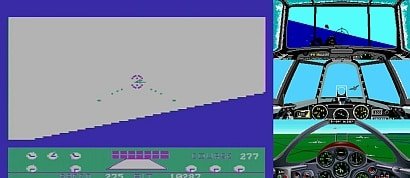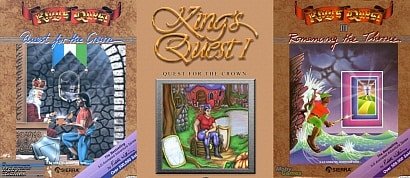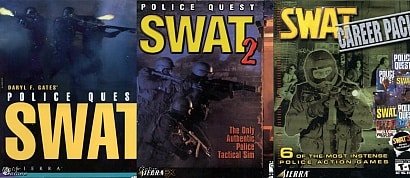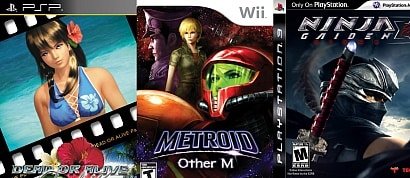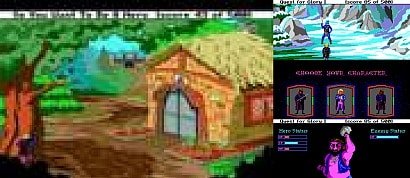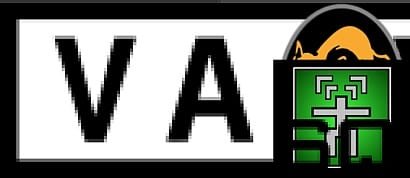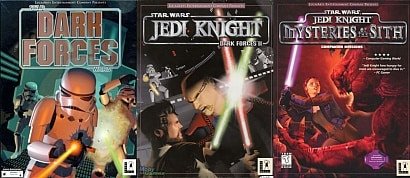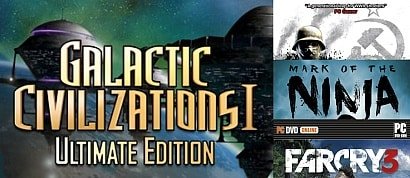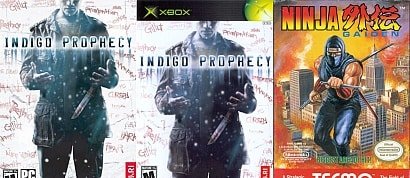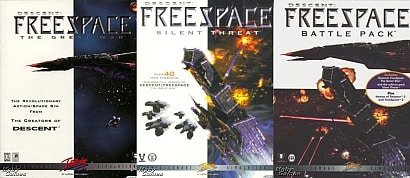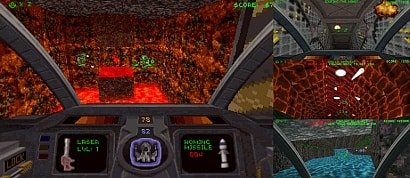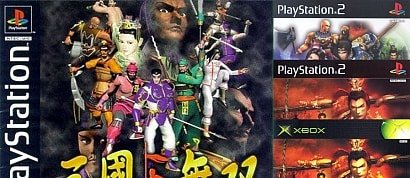Powered by SCI0/SCI1
Sort by:
Showing 25 items
Rating:
List Type:
King's Quest IV: The Perils of Rosella - PC Games
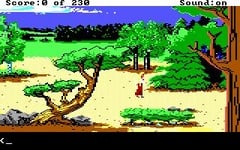 1988: Roberta Williams' King's Quest IV was the first game to be coded using Sierra's new SCI (Sierra Creative Interpreter) scripting language, in order to phase out their aging AGI script. The new SCI0 engine allowed for 320x200 graphics with 16 colors as well as a music-card soundtrack support.
1988: Roberta Williams' King's Quest IV was the first game to be coded using Sierra's new SCI (Sierra Creative Interpreter) scripting language, in order to phase out their aging AGI script. The new SCI0 engine allowed for 320x200 graphics with 16 colors as well as a music-card soundtrack support.Part of the King's Quest series.
 1988: The first Leisure Suit Larry sequel was coded with SCI0 with 16 colors and MIDI sound support. Due to criticism of too much sexual scenes in the first one, this game was highly toned down.
1988: The first Leisure Suit Larry sequel was coded with SCI0 with 16 colors and MIDI sound support. Due to criticism of too much sexual scenes in the first one, this game was highly toned down.Part of the Leisure Suit Larry series.
List-All's rating:


Police Quest 2: The Vengeance - PC Games
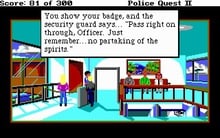 1988: The sequel to Police Quest focused more on detective and forensics work than the traffic-cop gameplay of the first game.
1988: The sequel to Police Quest focused more on detective and forensics work than the traffic-cop gameplay of the first game.Part of the Police Quest series.
List-All's rating:


Space Quest III: The Pirates of Pestulon - PC Games
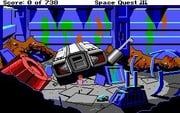 1989: The third chapter in the Space Quest series, The Pirates of Pestulon was one the first games to support the new Sound Blaster sound cards, as well as they added mouse support and an improved text parser for input.
1989: The third chapter in the Space Quest series, The Pirates of Pestulon was one the first games to support the new Sound Blaster sound cards, as well as they added mouse support and an improved text parser for input.The plot, about rescuing two programmers being held against their wishes at the evil ScumSoft, being forced to design their awful games, was a jab at Sierra's rival LucasArts and their SCUMM series of adventure games.
List-All's rating:


Hoyle Official Book of Games: Volume 1 - PC Games
 1989: The first installment in the long-running Hoyle series of table and card games was programmed with SCI0 language.
1989: The first installment in the long-running Hoyle series of table and card games was programmed with SCI0 language.
List-All's rating:


 1989: Lori Ann Cole and her husband Corey designed this new Sierra game series, a hybrid Adventure/RPG game called Hero's Quest. The smooth mixture of Sierra's classic adventure game style (with lots of funny puns throughout) with the ability to customize and develop your character (and import him into the next sequel) makes this game a fan favourite for years to come.
1989: Lori Ann Cole and her husband Corey designed this new Sierra game series, a hybrid Adventure/RPG game called Hero's Quest. The smooth mixture of Sierra's classic adventure game style (with lots of funny puns throughout) with the ability to customize and develop your character (and import him into the next sequel) makes this game a fan favourite for years to come.Part of the Quest for Glory series.
List-All's rating:


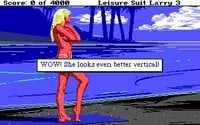 1989: The third Leisure Suit Larry game returned back to the raunchy adult themes that was absent in the second title. It was also the first Sierra adventure game to have unique customizations (such as changing colours of the input boxes) as well as the first to switch character part way thru the game, to see the story from another person's point of view, in this case, Patti's.
1989: The third Leisure Suit Larry game returned back to the raunchy adult themes that was absent in the second title. It was also the first Sierra adventure game to have unique customizations (such as changing colours of the input boxes) as well as the first to switch character part way thru the game, to see the story from another person's point of view, in this case, Patti's.Part of the Leisure Suit Larry series.
List-All's rating:


The Colonel's Bequest: a Laura Bow Mystery - PC Games
 1989: The first in the short-live 'Laura Bow Mysteries' series by Roberta Williams, this game was coded with SCI0 and used many similar gameplay elements of the first graphical adventure game, 1980's Mystery House.
1989: The first in the short-live 'Laura Bow Mysteries' series by Roberta Williams, this game was coded with SCI0 and used many similar gameplay elements of the first graphical adventure game, 1980's Mystery House.
Code-name: Iceman - PC Games
 1989: This spy adventure game from Jim Walls, creator of the Police Quest series, was critically panned, mostly due to its frustrating submarine simulator which made up a large portion of this game. Iceman was meant to be the first part of a Codename series, but disappointing sales ended the would-be franchise after one title.
1989: This spy adventure game from Jim Walls, creator of the Police Quest series, was critically panned, mostly due to its frustrating submarine simulator which made up a large portion of this game. Iceman was meant to be the first part of a Codename series, but disappointing sales ended the would-be franchise after one title.
 1990: The Search for the Grail is the first of a two-part Sierra series, designed by Christy Marx, using the SCI0 engine. The gameplay is typical of other Sierra adventure games, however it is enriched with several arcade sequences, puzzles and riddles.
1990: The Search for the Grail is the first of a two-part Sierra series, designed by Christy Marx, using the SCI0 engine. The gameplay is typical of other Sierra adventure games, however it is enriched with several arcade sequences, puzzles and riddles.No longer published by Sierra, Christy Marx offers Conquest of Camelot for free on her website.
 1990: Following the success of the first Hoyle volume, the second one dealt with only Solitaire and all its variants.
1990: Following the success of the first Hoyle volume, the second one dealt with only Solitaire and all its variants.
Quest for Glory II: Trial by Fire - PC Games
 1990: Quest for Glory II was one of the first Sierra games to use the updated SCI1 interpreter. Even though SCI1 added mouse-drive support as well as 256-color VGA graphics, it was up to the developer to call it out. Trial by Fire was still coded with EGA 16-color graphics and a text-parser for character input, in part to keep development time quick for the second chapter of the Quest for Glory series.
1990: Quest for Glory II was one of the first Sierra games to use the updated SCI1 interpreter. Even though SCI1 added mouse-drive support as well as 256-color VGA graphics, it was up to the developer to call it out. Trial by Fire was still coded with EGA 16-color graphics and a text-parser for character input, in part to keep development time quick for the second chapter of the Quest for Glory series.
List-All's rating:


 1990: The first Sierra game to fully utilize the new SCI1 engine, the fifth part of the King's Quest series brought to Sierra fans the beauty of 256-color graphics (still at 320x200 resolution) and a completely re-designed mouse and icon driven interface to eliminate text-parser input.
1990: The first Sierra game to fully utilize the new SCI1 engine, the fifth part of the King's Quest series brought to Sierra fans the beauty of 256-color graphics (still at 320x200 resolution) and a completely re-designed mouse and icon driven interface to eliminate text-parser input.
Jones In The Fast Lane - PC Games
 1991: The 16-color diskette version of Jones in the Fast Lane was the last Sierra game to be coded with SCI0. The 256-color version was coded with the SCI1 engine.
1991: The 16-color diskette version of Jones in the Fast Lane was the last Sierra game to be coded with SCI0. The 256-color version was coded with the SCI1 engine.Free FLASH version: 'Jones in the Fast Lane
Hoyle Official Book of Games: Volume 3 - PC Games
 1991: Released on floppy discs and coded with the SCI1 engine, this was the next chapter in the popular Space Quest sci-fi adventure game series from Sierra.
1991: Released on floppy discs and coded with the SCI1 engine, this was the next chapter in the popular Space Quest sci-fi adventure game series from Sierra.A CD-ROM Enhanced version, coded with SCI1.1, would follow in 1992.
List-All's rating:


 1991: The first game in the Leisure Suit Larry series to get the 256-color icon-based treatment, LSL5 is actually the fourth title in the series (creator Al Lowe said he'd never made a number 4, so he skipped it and called this one 5).
1991: The first game in the Leisure Suit Larry series to get the 256-color icon-based treatment, LSL5 is actually the fourth title in the series (creator Al Lowe said he'd never made a number 4, so he skipped it and called this one 5).
List-All's rating:


EcoQuest: The Search for Cetus - PC Games
 1991: The first in a series of two education adventure games from Sierra, EcoQuest is designed to teach kids the importance of environmental ethics.
1991: The first in a series of two education adventure games from Sierra, EcoQuest is designed to teach kids the importance of environmental ethics.
 1991: The first Sierra classic that was given a 256-color icon interface make-over with the help of the SCI1 engine was the first part of the Leisure Suit Larry series. It re-drew Larry as more of a short cartoonish guy, first seen in LSL5.
1991: The first Sierra classic that was given a 256-color icon interface make-over with the help of the SCI1 engine was the first part of the Leisure Suit Larry series. It re-drew Larry as more of a short cartoonish guy, first seen in LSL5.
List-All's rating:


Mixed-Up Fairy Tales - PC Games
 1991: The game is designed with younger gamers in mind, and features a simple VGA interface with two actions, "Do" and "See", rather than the full icon bar used in other Sierra games.
1991: The game is designed with younger gamers in mind, and features a simple VGA interface with two actions, "Do" and "See", rather than the full icon bar used in other Sierra games.
Police Quest 3: The Kindred - PC Games
 1991: The third part of the series, Police Quest 3 was also the last release that original designer Jim Walls was involved with, and SWAT found Daryl F. Gates
1991: The third part of the series, Police Quest 3 was also the last release that original designer Jim Walls was involved with, and SWAT found Daryl F. Gates Part of the Police Quest series.
 1991: Another official Sierra VGA remake, this time Roger Wilco's world got a 256-color icon interface make-over.
1991: Another official Sierra VGA remake, this time Roger Wilco's world got a 256-color icon interface make-over.Part of the Space Quest series.
 1991: The second title in the 'Conquests' adventure series by Christy Marx takes us into the world of Robin Hood, this time in full 256-color graphics and using the icon-based interface first seen in King's Quest V.
1991: The second title in the 'Conquests' adventure series by Christy Marx takes us into the world of Robin Hood, this time in full 256-color graphics and using the icon-based interface first seen in King's Quest V.No longer published by Sierra, Christy Marx offers Conquest of the Longbow for free on her website.
Castle of Dr. Brain - PC Games
 1991: An educational game designed for kids ages 12 and up, Dr. Brain offers up many puzzles that deal with mathematics and logic solving. It was followed by 1992's The Island of Dr. Brain.
1991: An educational game designed for kids ages 12 and up, Dr. Brain offers up many puzzles that deal with mathematics and logic solving. It was followed by 1992's The Island of Dr. Brain.
Mixed-up Mother Goose [VGA CD Edition] - PC Games
 1992: This Sierra re-make brought Mother Goose to her full 256-color glory, along with a very different, child-friendly icon interface. The game would be remade a final time in 1996, in the Deluxe version, to SVGA graphics.
1992: This Sierra re-make brought Mother Goose to her full 256-color glory, along with a very different, child-friendly icon interface. The game would be remade a final time in 1996, in the Deluxe version, to SVGA graphics.
Sierra's Creative Interpreter (SCI) is the scripting language created by Jeff Stephenson of Sierra On-Line for its adventure games after the older AGI. While AGI was a procedural language, SCI is completely object-oriented.
Although continuously developed between 1988 and 1996, five major versions can be isolated: SCI0, SCI1, SCI1.1, SCI2 and SCI3. This list deals with the early versions, SCI0 and SCI1.
SCI0: First used in King's Quest IV in 1988, SCI0 allowed for 320x200 resolution with 16-color EGA graphics, as well as music-card support. Input for adventure games was done thru a text parser (manual input of commands you wished the character to perform).
SCI1: Released in 1990, the biggest difference for SCI1 was support for 256-color VGA graphics, still at a resolution of 320x200, though 16-color EGA was still available (many games were sold in both 16-color and 256-color versions at that time). Most SCI1 games are also mouse-driven, using an icon-based interface.
Although continuously developed between 1988 and 1996, five major versions can be isolated: SCI0, SCI1, SCI1.1, SCI2 and SCI3. This list deals with the early versions, SCI0 and SCI1.
SCI0: First used in King's Quest IV in 1988, SCI0 allowed for 320x200 resolution with 16-color EGA graphics, as well as music-card support. Input for adventure games was done thru a text parser (manual input of commands you wished the character to perform).
SCI1: Released in 1990, the biggest difference for SCI1 was support for 256-color VGA graphics, still at a resolution of 320x200, though 16-color EGA was still available (many games were sold in both 16-color and 256-color versions at that time). Most SCI1 games are also mouse-driven, using an icon-based interface.
Early Gaming Scripting Tools
Sierra's AGI script language
* Powered by AGI
Sierra's later SCI versions
* Powered by SCI1.1/SCI2/SCI3
LucasArts' SCUMM engine (all versions)
* Powered by SCUMM
Revolution's Virtual Theatre engine
* Powered by Virtual Theatre
ScummVM, an emulator developed so AGI, SCI, SCUMM, and Virtual Theatre classic games can run on modern hardware.
* Games Supported by ScummVM
Modern 3D Gaming Engines
Valve's Source engine (all versions)
* Powered by Source
Epic's UnrealEngine1 (1.0 & 1.5)
* Powered by Unreal1
Epic's UnrealEngine2 (2.0, 2.5, 2X)
* Powered by Unreal2
Epic's UnrealEngine3
* Powered by Unreal3
Monolith's Lithtech engine (1.0, 2.x, Talon, Triton, Jupiter)
* Powered by Lithtech
Added to
People who voted for this also voted for
[Series] Final Fantasy Tactics
WWII Air Combat Flight Simulators
King's Quest series
The Works of Peter Molyneux
Final Fantasy: Crystal Chronicles
SWAT series
Developed by: Team Ninja
My Pinball Pleasures
[Series] Quest for Glory
My Favorite Developers
Cult Classics
Star Wars: Dark Forces Series
National Book Award Winners
People I can't stand playing in films
Games played in 2012
More lists from List-All
Games with significant name change
Dead Or Alive series
Freespace series
Descent series
Age of Mythology series
Dynasty Warriors series
Prince of Persia
 Login
Login
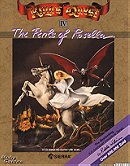
 16
16
 8.4
8.4
 0
0
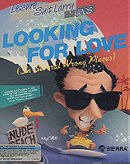
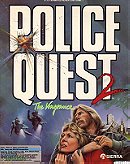


![Hero's Quest: So You Want to Be a Hero [Quest for Glory I]](https://lthumb.lisimg.com/349/401349.jpg?width=130&sharpen=true)
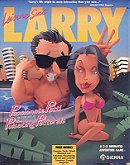
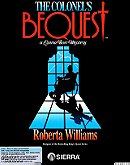
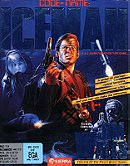


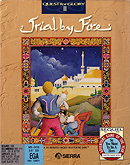
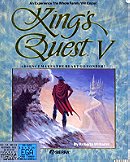

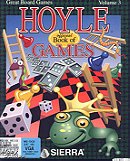

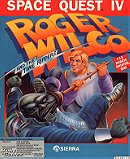
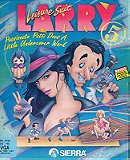

![Leisure Suit Larry 1: In the Land of the Lounge Lizards [VGA]](https://lthumb.lisimg.com/166/27209166.jpg?width=130&sharpen=true)

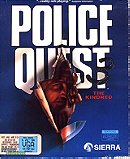
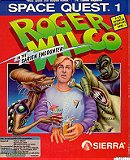
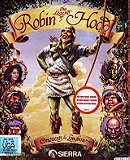
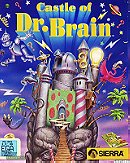
![Mixed-up Mother Goose [VGA CD Edition]](https://lthumb.lisimg.com/996/219996.jpg?width=130&sharpen=true)












